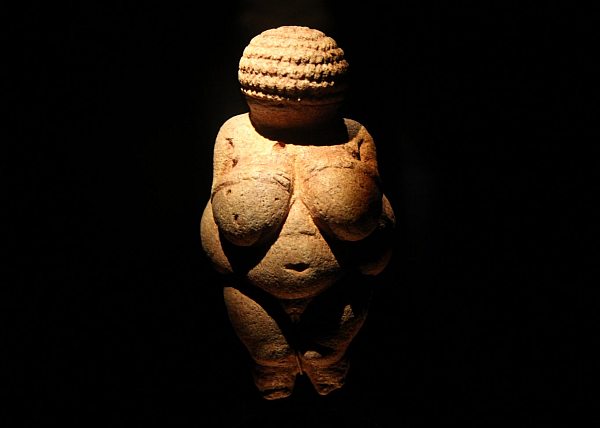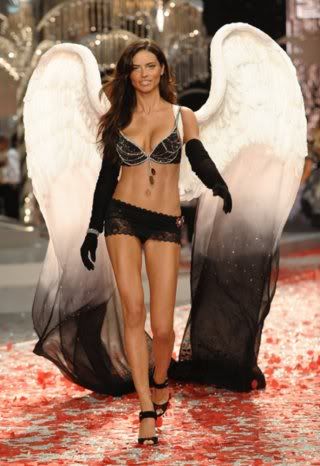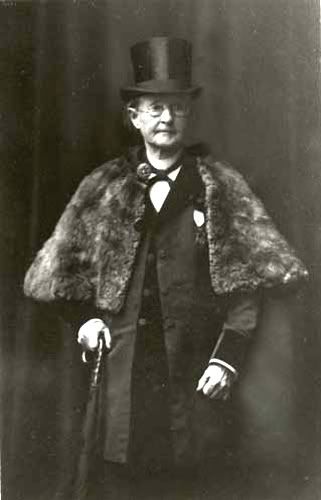
A Brief History of Woman As Thing
We see it everywhere. There is the striking image of Adriana Lima, famous for modeling for Victoria’s Secret. Tens of thousands of girls desperate to be loved and admired would do anything to be her. Including starve themselves to death. Actually, they have no idea what it is to be her, they merely want to look like her. This is a significant point of distinction that we should make as we consider Adriana Lima’s body image: as a person, she is virtually unknown to the public. She is, at least in the public eye, a thing.

Surely Ms. Lima is a being, and quite possibly a wonderful one, but how she functions in the public consciousness is as a carefully engineered human marketing message. Ms. Lima elicits a strong sexual response from a wide spectrum of people, largely men, when she appears in her underwear. This leaves young women who have no notion of the depth of real love with the thought “I want to be adored like that”. Her sexual celebrity is based on her ability to trigger the basest of human instinct and is confused by young people as real admiration. She is the sexual version of a Big Mac shown on late night television to entice hungry people to visit the drive-through window of their local fast food restaurant.
Teenage years are already fraught with considerable insecurity as nearly every young person is trying to figure out who and how to be. Being pounded with fashion and body imagery suggesting that there are physical standards beauty that are passed off as empirical stratifies us into a rigid caste system based on genetic luck and marketing greed. Suddenly, bald men cannot win elected office even if they are organizational geniuses. Heavy women cannot be news anchors as beauty-caste consciousness perpetuates itself through our entire society. The cultural conversation of idealized beauty leaves everyone except for the largely self-proclaimed beauty Brahmans feeling bad about themselves.
This phenomenon is doubly disturbing when you realize that body image marketing ultimately impacts natural selection and, while doing wonders for the next generation of trophy wives, it is informing breeding selection based on looks rather than characteristics that actually benefit survival and the future of the human race, like intelligence. There is no suggestion here that people who are fortunate enough to match the beauty ideal du jour are lacking in other qualities. This is certainly not true. The point is that as a society, we should rethink the merit of allowing marketing dynamics to influence our sense of human value at all.
The marketing strategy behind the body image of Adriana Lima is carefully calculated to drive consumers into the store to buy lingerie. It is the consumer culture equivalent of driving lemmings off of a cliff. In the process, young women, especially those in their teenage years , are highly vulnerable to the not-so- latent suggestion that being pretty is powerful because being pretty triggers sexual responses. This type of thinking causes young people to look in the wrong direction when it comes to finding a path to success, social contribution and happiness. We are a culture that worships mannequins and promotes life practices of self-starvation and purging to pay homage to those gods. We really need to find a new religion or at least a more wholesome hobby.

In the beginning of the history of woman as thing, the image of woman was revered as symbol of fertility representing the possibility of survival . One of the first known instance of the objectification of women can be found in pre-historic art, specifically, in a statute known as the Venus of Willendorf. Found in 1908, this small statue is estimated to be over twenty thousand years old. It is a matter of scientific assumption that this image of a heavy-set woman is somehow related to fertility consciousness. This hypothesis is evidenced by the visual emphasis of large breasts , substantial body fat and the detailed articulation of the vulva ( not pictured here). These visual emphases suggest that the sculptor was focused on these characteristics, and possibly idealizing them, thereby conveying a reverence for highly fertile woman.
While the details carved into the Venus of Willendorf tell us what was on the sculptor’s mind, the details that are missing tell us what he or she considered to be unimportant. The Venus of Willendorf has no face. One could argue that this is simply an oversight of due to the primitive technique of the sculpture, but the facts suggest otherwise. The artist here took great pains to sculpt the fine plaits in her hair, presumably a prehistoric fashion statement. In other words, the Venus of Willendorf as a symbolic communication, depicts a fertile beauty whose personal identity is unimportant. This statute is similar to carvings of other things that prehistoric humans held as the necessary to sustain life, mainly wild game and other animals.
Twenty thousand years later, our cultural iconography is still generating this very same consciousness. We are still obsessed with the object of woman and do not necessarily care to know much about her as a being. While our art allows women to have a face, it does not allow them to have an identity other than what is predicated on fashion. That is not a lot to show for twenty thousand years of evolution.
It appears, after all these years, that we may finally becoming to a bona fide age of equality. Sexual objectification is now an equal opportunity affliction. There are billboards on the side of most urban freeways of young men’s torsos rising out of their partially opened pants that expose the waistband of their boxer shorts as prefect abdominal muscles ripple upward to join a flow anatomical structure that seems to the ordinary man as a hopelessly impossibility. Sometimes we see his face and sometimes we don’t. His image has been carefully selected to jolt some of us into sexual arousal while suggesting to the rest of us that we are not worthy because we do not look like that. Even heterosexual men cannot help but look on in awe.
In the next decade or two we will not be looking at real human physiques in visual art. Computers will calculate the most appealing possible human image and fabricate virtual people for advertising. Since we do not need the advice of fashions to help us find ways to world peace, the need for an actual person to associated with a body image will disappear entirely. Will there still be the lucky few who meet the physical standards of the ever-fluctuating virtual standard of beauty or will we all be in therapy because we cannot possibly compete with our own computer generated fantasies?
When you have children to feed, your paunch is an artifact of a different set of life choices than those suggested in fashion advertising. House payments and braces replace gym memberships as we resign ourselves to be something that we are told is visibly less admirable. Young people are programmed by marketing media practically from birth to believe that following a temporary body image fad will acquire for them some ill-defined virtue. Girls in particular, seem susceptible to believing that being able to trigger sexual attraction is a form of personal power and validation. In a world where a hot body gets you what you want, at least in round one, where is the incentive to become more?
My eldest daughter attended high school at an all-girls school. Like any high school, there were dances, but because there were only girls in her school this required my daughter to invite boys to be her date. As her very first dance approached, she invited a boy with whom she had attended grade school and he accepted her invitation. A week or so before the dance, she heard through a friend that her intended date was not going to go to the dance with her, but instead had changed his plans and was intending to go with a tall, slender girl who had just weeks before been one of my daughter’s close friends. It turns out that this fellow had gotten what he felt was a better offer and decided to trade up. Not coming from a family of any breeding or familiarity with common decency, my daughter was stood up without as much as a phone call just days before her first venture into dating. To my daughter’s merit, she attended that dance anyway with another boy, a family friend, which in my book took enormous courage.
This was my daughter’s first excursion into the world of boys and my first excursion into the world of having a daughter in the world of boys. She was thunderstruck by the rejection and, of course, as we all do, went searching for answers. As we were sitting on the couch one afternoon, she asked me a question that simply broke my heart. “Daddy, am I pretty?” Every father of a daughter should be prepared from the moment that they take their daughters home from the hospital for the first time to answer that question with a resounding “yes.” Being consumed with my natural tendency to over intellectualize everything and simultaneously being completely unprepared to handle my own pang of sadness at even being asked such a question, I froze. She took my hesitation for a “no”. No amount of convincing thereafter would make up for me not having my answer on the tip of my tongue.
This has since come to infuriate me. First, the creep that gave her cause to have this moment of doubt should have been thrashed within an inch of his life for being a vulgar, gutless cretin. Of course, I might be just a bit overly paternal on this point. But the fact remains that my daughter is not a pair of sox to be traded out on whim. Second, no one should ever have to question their own validity like, especially not teenagers. Ever. No one should ever have to live in doubt that they are anything less than perfectly lovely and possessed of the value of an angel. The mere fact that we live in a society where we can objectify people and then impose upon these human things of our own making subjective interpretations of their appearance based on arbitrary standards concocted the ignorant is enough to make you want to go blind and be free of such nonsense forever.
And for the record, my daughter is lovely – truly lovely. Every time I look into her face, she reminds me of the pictures of my favorite grandmother when she was young. I do not see my daughter in three dimensions. I see her in four. I can still see her former infant self in the curve of her forehead. She has her mother’s hands. She is the little girl scrambling into my lap and the powerful woman walking into the office building of the United States Senate to go to work. She has thick curly blond hair and the most beautiful blue eyes that have ever graced a woman’s face. Because she is not a thing to me, because she is a being that represents an entire personal and family history and is the culmination of a life of experience and virtue, she cannot be anything but awe inspiring. This is not true just in these old eyes, but in the eyes of anyone who truly sees.
Every person on this planet, without exception, is here because for millions of years their ancestors have kept the spark of life alive and successfully passed it on to the next generation. They hid their children in the tall grass outside of their villages to conceal them from invading hordes. They nursed them through famine and disease. The living are the artifacts of a life force that has fought for its existence for millennia. How are we then to degrade this with underwear advertising? We are a species of walking miracles. We are a race, the human race, of highly improbable beings. How dare anyone find fault with the appearance of any one of us.
Since the beginning of the species, human iconography has been used as a shamanic device, a totem image, expressing the deepest and most urgent of our desires. Art is a form of prayer. It not only declares what is on our mind, but what we want. Marketing art is calculated to create the image of what we want to be after we have been told that we want to be it.
In the domain of true religion, however, human iconography sends a different message. We see a crucifix and even if we are not Christian, we are reminded of the power of unlimited human commitment and sacrifice for the sake of compassion. In the image of the Buddha we see the possibility of unlimited happiness through tranquility and the development of human consciousness. Of course, these images have been subverted as well. Victoria’s Secret, for example, had to be told by the Thai government by mandate of law that an image of the Buddha was an inappropriate decoration for the crotch of women’s panties.
So when we see Adriana Lima in her underwear, out attention is not merely drawn to a pretty thing. For those for whom she is an object of sexual attraction, she is a visual mantra of sexual consumption. For those who yearn for the power of her sexuality, she is an inspirational deity of a truly false religion. It is mesmerizing. It is instinctive. Like throwing blood into a shark tank, she is a thing that triggers and ultimately controls basic human instincts. She is the sacrificial goat tied to a stake in the jungle that lures the tiger.
Human sexual dynamics and the historical trend of male domination over them has been worn like grooves into the collective consciousness of humanity. Food and sex are things that humans must instinctively seek out. It is the basis of our physical survival and our point of greatest psychological vulnerability. It is the ring in our nose by which we can be lead to market.
Thousands of years later, our culture still uses images to objectify both women and men. It is a form sexual exploitation that is no longer limited to corralling women so that they may be dominated by men. Modern marketing seeks out and even fabricates images that are designed to appeal to our sexual instincts so as to control our behavior. Marketing is using this imagery of sexuality to control our buying habits just as it used to be used to control our breeding habits. No longer is woman as thing being used as a symbol to socially manage human sexuality, but now she is being turned into things that ensure that we buy certain products.
This is the main point about objectification. It is always a means of domination and control. It has not always been a device of manipulation for just marketing agencies. There is a history of worker as thing, Jew as thing, enemy as thing. The history of woman as thing reveals a process by which women have been measured against a societal standard to create social expectations and to ensure compliance. Clothing and the expression of sexuality have played a very large part in this control scheme. You can practically measure the degree of power that women hold in a society by what they are allowed or encouraged to wear. As women have fought for equality with men in Western cultures, there have been a correlative shifts in fashion.
Just over a century ago, woman as thing was depicted as a vision of modesty and compliance. The image of a woman in a wasp-waist dress who refrained from any public expression of her sexuality was iconic throughout much of American history well into the Twentieth Century. As the women’s rights movement gathered momentum culminating the winning the right to vote in the United States in 1919, women started shrugging off the image that was forced upon them by a male dominated society. They began to publicly control their own sexuality by cutting their hair and wearing more comfortable and revealing attire.
If you would like to see the modern version of this rebellion against the domination and control of female sexuality, look into a 20 year old Egyptian girl named Aliaa ElMahdy. Aliaa has a blog that recently ignited controversy across Islam when she posted a nude photograph of herself. While by Western standards, this type of photograph is relatively common as young people grapple with and communicate their sexuality in the Information Age through social media and sexting, it is shocking in the context of Muslim culture. Women have been stoned to death for less. As it stands in Egypt, her iconic nudity is a one-woman assault on the forced modesty imposed on women by her culture. It is a version of bra-burning in the Age of the Internet. She is saying to her culture that she is beautiful on her own terms and that her sexuality is hers and hers alone to manipulate. She has had many Western counterparts in this type of rebellion.

In the late Nineteenth Century, a woman named Mary Edwards Walker, the only woman to ever receive the Congressional Medal of Honor, was several times arrested for wearing men’s clothing. She was one of the first women doctors trained in the United States and was a decorated war hero having served as a field surgeon for the Union Army during the Civil War. She married a man, but felt that it was inappropriate for a male-dominated society to force women to wear uncomfortable clothing. When she died she was buried wearing a man’s suit.
In the 1910s progressive women began to “bob” their hair bucking the tradition that short hair was the fashion of prostitutes and sluts. In the 1920s, women began to wear sleek and revealing dresses that left little to imagination as they took control and used their sexuality on their own terms. In the 1960s, women of the Women’s Liberation Movement began to appear in public without bras thereby taking additional control of their own bodies and their public presentation. Aliaa ElMahdy now joins the ranks of those women who have stepped out of the paddock of sexual control and have used their body image not as a symbol sexual manipulation, but of sexual self-determination.
And yet, for as much as Gloria Steinem and Aliaa ElMahdy have sought to use body image as a badge of freedom, business has subverted even this newly liberated body image once again for greed and control. Thanks to feminists, it is no longer shocking to see ads of women in lingerie even on a billboard, but it has lost its meaning as a symbol of liberation from male domination and become, once again, a means of entrapment.
Thousands upon thousands of teenagers flock to stores to buy all manner of decoration by which to show off their sexuality because they have been lead to believe that being the object of sexual instinct is a source of personal value. This often comes at the expense of developing more realistic sources of personal value and greatly diverts attention away from the evolution of whole being. As long as human beings insists upon turning themselves into things, a self-defeating act of self-objectification, they will be moved about through time and space like furniture rather than as essential beings that are capable of deeply influencing the human experience.
True power comes from thoughtfulness and relatedness. It is the development of wisdom and the skill to use it that makes the world a better place because our daughters and sons have lived. When we teach boys and girls to contemplate the meaning of who they are and help them become aware of themselves as people who have the power to love, the power to commit, the power change the world around them , then we have transcended for all time the domination of objectification.

So how do we bring the history of woman as thing to an end? We cannot do it for women alone. We must do it for all living beings. When we stop using physical beauty as a proxy for value, we start a cultural conversation for real value that exceeds mere sex appeal and allows us to recognize the value of every member of the human race. If our sum- total of attraction to each other is sex and beauty it will create a new generations of naturally selected children that meet our visual ideals, but if they grow up to be vain and incapable of understanding value beyond appearances, then we will have evolved into a species of well-sculpted idiots. We are half-way there now.
The danger of treating people as things is that it traps our awareness into the tiny confines of three dimensional existence. The shape of a thing is the least likely indication of its value. It is the usefulness of a being, what it does and what it causes in the world of living beings that matters most. There are women whose faces bring tears to the eyes of many and thoughts of compassion and social commitment for the betterment of humanity to the minds of all. They are beautiful in ways that an underwear model can never fathom. They hunger and thirst for the well-being of all people, not to sculpt their bodies to look a certain way. It is not because of what they wear, but because of how they live, that inspires us and ignites benefit to sweeps through the collective consciousness of humanity.
People are beautiful because of what they think and do, because of what they create and bring to life in the world. If we allow our marketing systems to continue to measure us against a narrow set of ideals, we will miss entirely the opportunity to evolve into our full potential as beings. Keep in mind that the consciousness of people as thing, is the consciousness of people as targets, as slaves, as objects of manipulation. The evil of this perspective cannot be underestimated. Beings do not have to look a certain way. They are not dependent on their shape. A truly free mind appreciates this and can embrace beauty everywhere.
